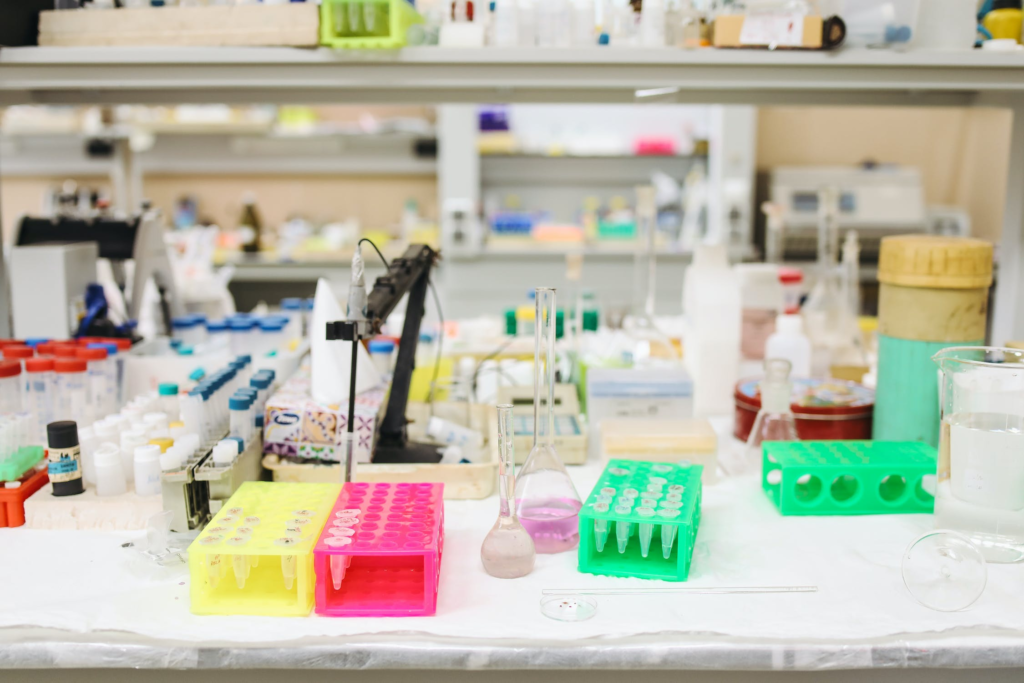Pharmaceutical analysis is a branch of analytical chemistry that focuses on the identification, determination, quantification, and quality control of substances used in the production of pharmaceuticals, as well as the analysis of pharmaceutical products themselves. Its primary aim is to ensure the safety, efficacy, and quality of drugs and pharmaceutical preparations. Here’s a note on the definition and scope of pharmaceutical analysis:

Definition
Pharmaceutical analysis can be defined as the systematic application of analytical techniques to pharmaceutical substances, drugs, and pharmaceutical products. It involves assessing the identity, purity, quality, and stability of pharmaceutical materials and products throughout their development, manufacturing, and distribution.
Scope of Pharmaceutical analysis
Pharmaceutical analysis is a crucial branch of pharmaceutical sciences that encompasses a wide range of applications focused on ensuring the safety, efficacy, and quality of pharmaceutical products. It involves the use of various analytical techniques and methodologies to examine raw materials, in-process samples, and finished dosage forms. The scope of pharmaceutical analysis is vast and extends across all phases of the drug development lifecycle, from research and development to post-marketing surveillance.
1. Quality Control (QC): Pharmaceutical analysis plays a fundamental role in quality control, which is a core aspect of pharmaceutical manufacturing. It ensures that every batch of a drug product complies with established regulatory standards and specifications. This includes the analysis of raw materials, excipients, active pharmaceutical ingredients (APIs), intermediates, and finished products. Tests are conducted to verify identity, potency, purity, and uniformity, ensuring that each product is safe for consumption and free from contamination or unacceptable levels of impurities.
2. Assay Development: Developing robust, precise, and validated analytical methods for the quantification of APIs in pharmaceutical formulations is a key area of pharmaceutical analysis. These assays are essential not only for determining drug content but also for detecting degradation products and monitoring dosage uniformity. Assays must adhere to parameters such as accuracy, precision, specificity, sensitivity, linearity, and reproducibility.
3. Stability Studies: Stability testing is vital to determine how environmental conditions such as temperature, humidity, and light affect a drug product over time. Pharmaceutical analysts perform long-term, accelerated, and stress stability studies to assess physical and chemical changes in drug substances and formulations. These studies provide critical data for assigning appropriate shelf lives and storage conditions, ensuring therapeutic effectiveness throughout the product’s lifecycle.
4. Pharmacokinetics: Pharmaceutical analysis supports pharmacokinetic studies, which investigate how drugs behave within the body after administration. This includes the analysis of drug concentrations in biological fluids such as blood, plasma, serum, and urine. Understanding a drug’s absorption, distribution, metabolism, and excretion (ADME) is crucial in determining appropriate dosing regimens, evaluating drug interactions, and developing safe and effective therapeutic strategies.
5. Pharmacopoeial Analysis: Pharmaceutical products must conform to the standards set forth by official pharmacopoeias, such as the United States Pharmacopeia (USP), British Pharmacopoeia (BP), and Indian Pharmacopoeia (IP). Pharmaceutical analysts follow these compendial methods for performing standard tests on drugs to ensure compliance with quality benchmarks. This includes tests for purity, dissolution, disintegration, pH, and microbial limits, among others.
6. Impurity Analysis: The identification and quantification of impurities, degradation products, residual solvents, and contaminants are among the most critical tasks in pharmaceutical analysis. The presence of such substances, even in trace amounts, can pose significant health risks. Therefore, advanced analytical techniques are employed to ensure that impurity levels remain within acceptable limits as specified by ICH guidelines (International Council for Harmonisation).
7. Bioequivalence Studies: In the development of generic drug products, pharmaceutical analysis is indispensable for conducting bioequivalence studies. These studies are designed to compare the pharmacokinetic parameters of a generic formulation with that of a branded or reference product. Analytical data helps confirm whether the two products exhibit comparable bioavailability, ensuring therapeutic equivalence and interchangeability.
8. Regulatory Compliance: Pharmaceutical analysis supports regulatory submissions and audits by generating scientifically valid data required by national and international health regulatory authorities. Regulatory bodies such as the US FDA, EMA, CDSCO, and WHO rely on analytical documentation for product approval, batch release, and quality assurance. Compliance with Good Laboratory Practices (GLP) and Good Manufacturing Practices (GMP) is mandatory and routinely audited.
9. Research and Development (R&D): In pharmaceutical research, analytical chemistry is integral to the discovery, formulation, and optimization of new drug candidates. It supports various stages of development by aiding in the identification of lead compounds, screening for drug activity, and establishing formulation strategies. Analytical techniques also assist in the evaluation of delivery systems, such as nanoparticles, liposomes, and transdermal patches, ensuring targeted and efficient drug delivery.
10. Dissolution Testing: Dissolution testing is a critical quality control parameter, particularly for solid oral dosage forms like tablets and capsules. This test measures the rate and extent to which the drug substance is released from the formulation into solution, simulating conditions in the gastrointestinal tract. The results help predict the bioavailability of the drug and ensure batch-to-batch consistency.
11. Environmental Monitoring: Pharmaceutical analysis extends beyond the product itself to include monitoring the manufacturing environment. This includes the analysis of air, water, surfaces, and cleanroom conditions to detect any microbial or chemical contaminants. Environmental monitoring ensures compliance with safety, hygiene, and contamination control standards, which are essential for maintaining product integrity.
12. Adulteration and Counterfeit Detection: Pharmaceutical analysis also plays a critical role in identifying adulterated, substandard, and counterfeit medications. Using analytical techniques such as spectroscopy, chromatography, and mass spectrometry, analysts can differentiate genuine pharmaceutical products from fraudulent ones, thereby safeguarding public health and supporting law enforcement in regulatory actions.
13. Analytical Instrumentation: Modern pharmaceutical analysis heavily depends on the use of advanced analytical instruments and methodologies to achieve accuracy and reproducibility. These include:
- High-Performance Liquid Chromatography (HPLC)
- Gas Chromatography (GC)
- Mass Spectrometry (MS)
- UV-Visible Spectroscopy
- Infrared (IR) and Nuclear Magnetic Resonance (NMR) Spectroscopy
- Electrochemical methods, among others.
These instruments enable the qualitative and quantitative analysis of a wide array of substances within complex pharmaceutical matrices.




